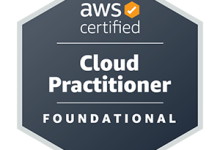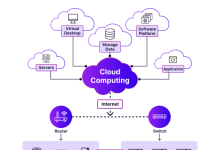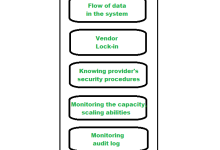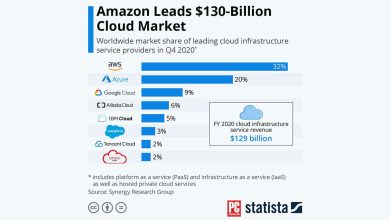security and cloud computing
Ads
The Importance of Security in Cloud Computing
Security is a critical aspect of cloud computing that cannot be overlooked. As organizations increasingly rely on cloud services to store data and run applications, ensuring the security and privacy of this data is paramount. With the rise of cyber threats and data breaches, companies must implement robust security measures to protect sensitive information in the cloud.
Understanding the Basics of Cloud Computing
Cloud computing refers to the delivery of computing services over the internet, including storage, servers, networking, databases, analytics, and software. It offers numerous benefits to organizations, such as scalability, flexibility, and cost-efficiency. However, it also introduces security risks that need to be addressed.
The Strengths of Security in Cloud Computing
One of the strengths of security in cloud computing is the ability to leverage the expertise of cloud service providers. These vendors invest heavily in security measures, such as encryption, access controls, and monitoring, to protect their clients’ data. Additionally, cloud providers often comply with industry standards and regulations to ensure data security.
Weaknesses of Security in Cloud Computing
On the flip side, there are weaknesses in security in cloud computing that organizations should be aware of. These include the shared responsibility model, where both the cloud provider and the customer have a role to play in securing data. Misconfigurations, data breaches, and insider threats are also common vulnerabilities in cloud environments.
The Role of Encryption in Cloud Security
Encryption plays a crucial role in ensuring data security in the cloud. By encrypting data at rest and in transit, organizations can protect sensitive information from unauthorized access. Secure key management is essential for maintaining the confidentiality and integrity of encrypted data.
Best Practices for Securing Cloud Environments
Implementing best practices is key to enhancing security in cloud environments. This includes conducting regular security assessments, implementing multi-factor authentication, monitoring user activity, and keeping software and applications up to date. Training employees on security awareness is also crucial to prevent social engineering attacks.
Compliance and Regulatory Considerations in Cloud Security
Organizations must consider compliance and regulatory requirements when it comes to securing data in the cloud. Industry-specific regulations such as GDPR, HIPAA, and PCI DSS impose strict guidelines on data protection and privacy. Failure to comply with these regulations can result in severe penalties and reputational damage.
Choosing the Right Cloud Security Solutions
When selecting cloud security solutions, organizations should consider their specific security needs, budget constraints, and scalability requirements. There are various security tools available, such as firewall-as-a-service, intrusion detection systems, and security information and event management (SIEM) solutions. It’s essential to choose solutions that align with the organization’s overall security strategy.
The Future of Security in Cloud Computing
As technology continues to evolve, the future of security in cloud computing looks promising. Advancements in artificial intelligence, machine learning, and automation are revolutionizing how organizations detect and respond to security threats. However, staying ahead of cyber adversaries will require continuous innovation and collaboration within the cybersecurity community.
FAQs About Security and Cloud Computing
1. What are the common security risks in cloud computing?
Common security risks in cloud computing include data breaches, account hijacking, insecure APIs, and insider threats. Organizations should implement robust security measures to mitigate these risks.
2. How can organizations secure their data in the cloud?
Organizations can secure their data in the cloud by encrypting sensitive information, implementing access controls, monitoring user activity, and conducting regular security audits.
3. What is the shared responsibility model in cloud security?
The shared responsibility model in cloud security defines the responsibilities of both the cloud provider and the customer in securing data. The provider is responsible for securing the cloud infrastructure, while the customer is responsible for securing their data and applications.
4. What is the role of compliance in cloud security?
Compliance ensures that organizations adhere to industry regulations and standards to protect sensitive data in the cloud. Non-compliance can result in legal consequences and financial penalties.
5. How can organizations choose the right cloud security solutions?
Organizations can choose the right cloud security solutions by conducting a thorough assessment of their security needs, evaluating available options, and selecting tools that align with their security strategy.
6. What are the advantages of implementing encryption in cloud security?
Encryption helps organizations protect sensitive data from unauthorized access by encrypting information at rest and in transit. Secure key management is critical for maintaining the confidentiality of encrypted data.
7. What trends are shaping the future of security in cloud computing?
Trends such as artificial intelligence, machine learning, automation, and zero-trust security are shaping the future of security in cloud computing. These technologies enable organizations to detect and respond to security threats more effectively.
Conclusion: Taking Action to Enhance Security in Cloud Computing
In conclusion, security in cloud computing is a complex and evolving landscape that requires proactive measures to protect sensitive data. By implementing best practices, leveraging encryption technologies, and staying informed about the latest security trends, organizations can enhance their security posture in the cloud. It’s essential for businesses to take action now to secure their data and mitigate the risks associated with cloud computing.
Remember, the security of your data is paramount, and investing in robust security measures is crucial to safeguarding your organization’s sensitive information. Stay informed, stay vigilant, and take the necessary steps to enhance security in cloud computing.
Disclaimer
Please note that while the information provided in this article is intended to be accurate and up-to-date, it should not be considered as legal or professional advice. It is recommended to consult with cybersecurity experts and legal professionals for specific guidance on securing data in the cloud. The author and publisher of this article are not liable for any damages or losses incurred as a result of implementing the suggestions provided.









